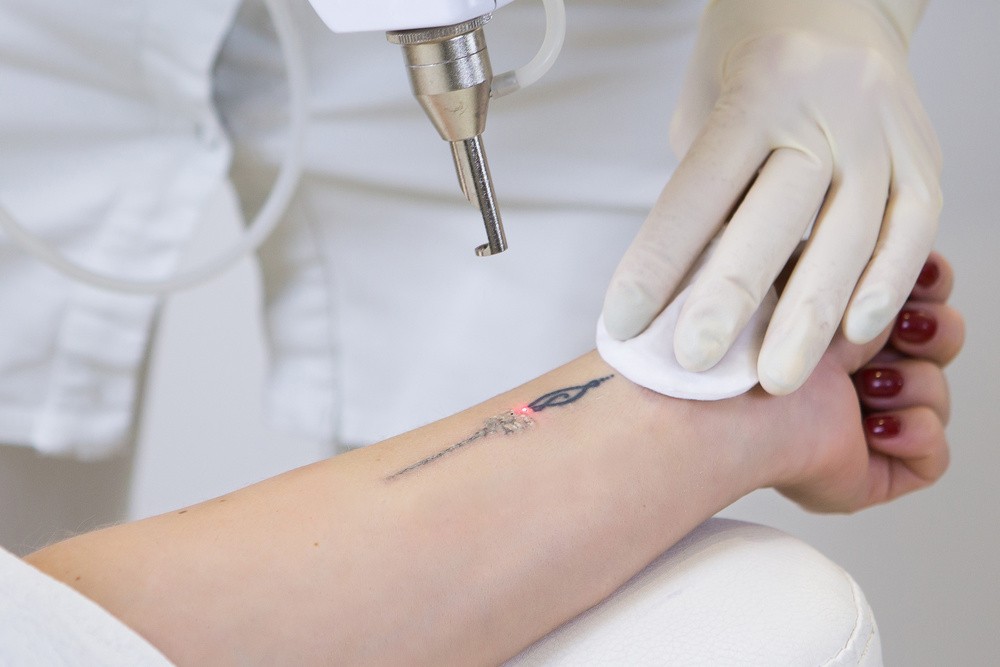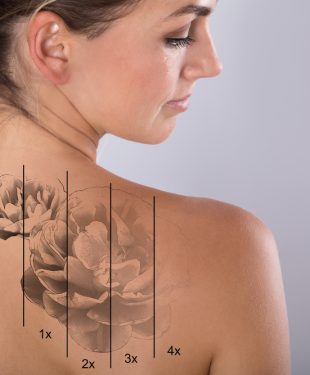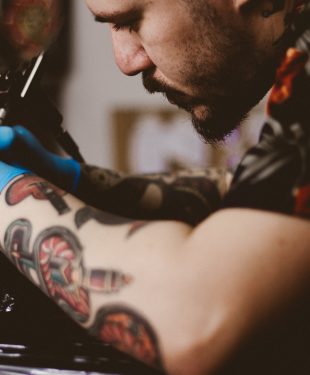
There can be many reasons why you like to have tattoos. Whether you want to mark an essential aspect of your life, honor loved ones, or make a fashion statement, getting tattoos has become more common. However, there are instances wherein you regret the tattoo you receive or want to create extra space for another design. This is where the process of tattoo removal enters the picture.
Tattoo removal is a procedure to eliminate an unwanted tattoo on your body. It’s best to consult a specialist to know which tattoo removal procedure is best for you. Likewise, knowing the tattoo removal procedure allows you to prepare yourself for the process. Below are some of the typical tattoo removal methods:
- Laser Removal: This method involves a specialist numbing the tattooed area with local anesthesia and targeting it with a high-intensity laser to break the ink particles for the body to absorb and metabolize.
- Dermabrasion: This method involves scraping the top layer of the skin to remove the tattoos.
- Surgical Excision: Unlike the first two methods, this is more invasive. Here, the tattooed part is cut-off, and the skin is stitched afterward, which may take up to three sessions. Therefore, this is ideal for small tattoos rather than big ones.
The process differs from getting a tattoo, so it’s best to set proper expectations. Continue reading if you want to learn what to expect on your first tattoo removal appointment.
Tattoo Removal May Cause Some Discomfort

Laser Tattoo Removal On Woman’s Shoulder Against Gray Background
Laser removal is considered the standard and popular method of all three methods. Hence, if you want multiple tattoos removed, you can expect to treat them with several lasers with various wavelengths.
It’s typical to feel some discomfort during the tattoo removal. However, the pain may range from moderate to severe, depending on your tattoo’s size and design. The discomfort associated with the removal process feels like a rubber band flicking against your skin. Moreover, the target area will feel tender for several days after the first appointment.
Aside from discomfort, the target area may look red or bruised, a common reaction when the tattoo is removed. Blisters may also occur in some cases; if it does, leave them be, as they’ll heal independently. And if you wonder if you’ll experience tattoo scarring right after the procedure, scars are expected when the tattoos are removed. But there are some ways to help you prevent scars throughout the healing process.
Factors That Impact The Duration Of The Tattoo Removal
The duration of your first tattoo removal session may be much longer than subsequent sessions. While a laser tattoo removal process is finished within a few minutes, the completion time varies, depending on some factors. Below are some factors that impact the success of your tattoo removal:
- Size – The size of your tattoo impacts the duration of the tattoo removal. The smaller your tattoo, the shorter the session required.
- Location – Your tattoo’s placement is another factor to consider. Tattoos placed on your lower extremity may require additional removal sessions because the lower extremity is far from your heart. Therefore, the blood flow isn’t as strong. This means neck, chest, or back tattoos are easier to remove because those parts have greater blood flow.
- Skin Tone – A lighter skin tone doesn’t absorb laser light. Hence, a lower wavelength is enough to focus and break down the ink pigments. With darker skin tones, specialists may require a higher wavelength which causes less damage to the ink pigments. Thus, longer or additional sessions may be necessary to remove the tattoo entirely.
- Ink Color – Tattoos in black, green, or blue are easier to remove than red, orange, or white ink colors.
Setting realistic expectations regarding the treatment time you must spend for your first tattoo removal appointment is essential. This way, you can prepare yourself emotionally and physically. The more you’re ready, the higher your chances of experiencing a speedy recovery process throughout your tattoo removal journey.
Your Overall Health Affects Your Tattoo Removal Session

Photo by Allef Vinicius on Unsplash
If you’re scheduled for your first tattoo removal appointment, you must be wary of some special considerations, such as additional treatments due to your health condition. As mentioned, your immune system plays a crucial role in the success of your tattoo removal appointment.
With blood circulation, tattoo removal may be a complicated process if you are smoking because it weakens your immune system, resulting in constricted blood flow. Consequently, you may require more treatment sessions than those non-smokers.
If the location of your tattoo is sunburnt or tanned, your tattoo removal procedure may be more painful and less effective. Therefore, avoiding sun exposure before, during, and after your tattoo removal appointment is ideal.
Consulting a tattoo removal specialist is vital. Talk to them before your scheduled tattoo removal appointment about some special considerations. This way, you’ll know what to do before and during your first treatment session.
Conclusion
Knowing what to expect during your first appointment can be crucial for its success and your recovery. The more you understand these expectations, the more you can prepare yourself for the tattoo removal session.
So, if you’re aiming to have your tattoos removed, keep the information mentioned above in mind to help you set realistic expectations for your first tattoo removal session. Talk to a reliable removal specialist beforehand to help you decide if tattoo removal is appropriate for your situation.
Read more lifestyle and beauty articles at ClichéMag.com
Images provided by Flickr, Unsplash, Pexels, Pixabay & Creative Commons
The post What to Expect During Your First Tattoo Removal Appointment appeared first on Digital Online Fashion Magazine | Free Fashion Magazine | Best Lifestyle Blog.

0 Commentaires